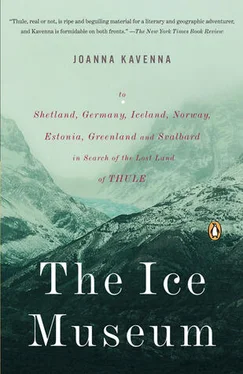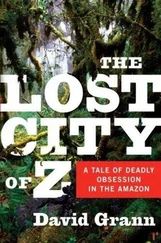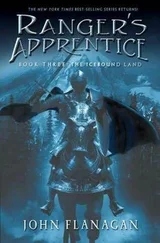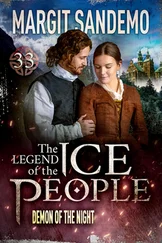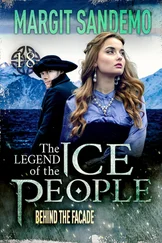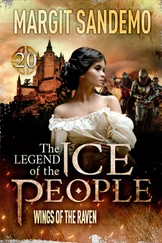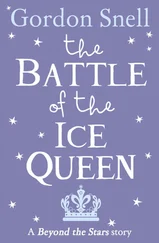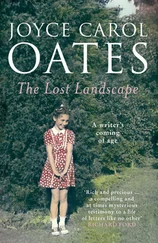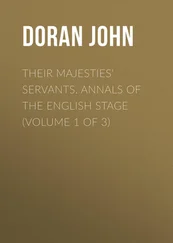Everyone laughed. The Volcano Man stared balefully at the crowd, waiting for them to subside. ‘My father began filming after the war. In 1963 he filmed the island of Surtsey coming out of the sea. On 8 September 1977 we had an eruption of a pipe by Lake Mývatn, the volcanic lake in the far north of Iceland. This was my project for the next sixteen years. There was a very big magma chamber under the ground, and when the magma chamber erupted, the ground went down. The main problem was when the crater was open, it was never more than for four hours, so I had to wait there. All my money disappeared into Lake Mývatn, I hope to be able to fish it out some day.’
Fainter laughter. Fidgeting from the party of English school-girls. A stifled yawn from the Volcano Man. ‘In one day the whole town was raised by thirty centimetres. A bathing cave near Mývatn that day became too warm for bathing. It still is. Another one used to be too cold for bathing. That day, it became perfect.’
A last laugh from the audience and the Volcano Man stumbled away, shaking his head. I imagined him muttering in the projector room while he started the film. The film further defied the audience: there was no plot, no drama, it was a doleful account of the Volcano Man trailing around, trying to reach volcanic explosions in time, chartering aeroplanes, seeking death-defying experiences. Though the Volcano Man was clearly hoping some violent disaster would save him from any further appearances at the Volcano Show, real physical harm evaded him: the magma moved too slowly to threaten him; his helicopter always worked, despite his predictions that it would crash horribly on the rocks.
‘Once,’ his voice narrated, over the flickering blurred shots of magma explosions far in the distance, ‘we got some four-wheel drives, and drove across the ice cap. We had heard scientists say there were fractures in the rocks. Our four-wheel drive ran out of gas in front of the lava flow.’
On the film, there was an explosion from a piece of ice far away; the camera panned, the picture coming gradually into focus. A remote image of fire spluttering onto the ice, cracking the surface. The voice-over came again, steeped in disappointment: ‘Fortunately we managed to start the car again.’
The show ended in a shuddering anti-climax, and we all filed slowly out of the hall. ‘Come again,’ said the Volcano Man, indifferently.
The wind gusting the rain into my face, I walked around the lake. At the hotel, the rooms were painted pale shades; the furniture was pine, everything adapted to minimalism. The aeroplanes whined into the city airport. A group of teenagers in jeans and trainers ran along the street pushing a stalled car, sweating in spite of the rain and wind. The crowds streamed into the bars, and I followed them to a place called Kaffibarinn. They sat in groups drinking in a steady progress, moving from reserved to riotous. They drank until they were ready to dance. Then they pushed the chairs back and started to sling themselves around. The barman said to me: ‘See them, they want to kill themselves. It’s amazing more don’t die.’ He laughed, showing a mouth without front teeth, and pulled everyone another pint. The thumping bars of Reykjavík were packed with the denizens of studied decadence, trying for total alcoholic collapse. The drinkers began ricocheting out of the bars in the small hours, filing towards the kebab shops. They lined up along the edges of the pavements, baying across the road at each other.
Abandoned to the soft evening, in the town that staged its own eternal return of rain and wind, I stayed on the streets as the colours of the sky shifted from rain-grey to deep blue. The small town resounded to a low beat from the bars and the clubs; the night was cold and dank. As the sun began to rise, the streets quietened. The wind died. Everything seemed to wait, for the collective hangover of the morning.
Reykjavík was the transition point between homely steamer and weird country, and the nineteenth-century travellers struggled against the feeling, but they had to admit to finding it less strange than they had hoped. Instead of a baroque cathedral, manufactured entirely from lava, or an enormous troll palace on a hill, they found a line of shabby buildings spread out on a sallow shore. ‘Viewed from the sea, the capital of Iceland has a very mean appearance. It is situated in a narrow flat, between two low hills, having the sea on the north-east, and a small lake on the south-west side,’ said Sir George Steuart Mackenzie. ‘The little town of Reykjavík consists of a single broad street, with houses and cottages scattered around. The number of inhabitants does not amount to 500,’ said Madame Ida Pfeiffer. ‘There are but two streets, and these are hardly worthy of the name. Decayed fish, offal, filth of every description, is tossed anywhere for the rain to wash away, or for the passer-by to trample into the ground,’ said Sabine Baring-Gould, M.A. Useful, was the best they could reach for. Quaint, a few rolled the word around in their mouths, trying it out, but somehow it didn’t suit the cramped houses and the smell of putrescence. Must get better they decided, galloping off on their horses, to wax euphoric over some hot springs.
Brooding on the quayside, away from the groups, was Richard Burton, staring at the view. Burton was preparing to spend a summer in Ultima Thule. It was the custom to throw a Thule in at some stage in the travelogue, like Mrs. Alec Tweedie, modestly alluding to the ancient place, before moving onto the contemporary wonders of the lava plains. But Burton levelled an exacting gaze at the question of Thule. Burton was certain he could solve it, the millennia-old mystery. It was the sort of challenge he was likely to enjoy—an explorer in sinewy middle age, he had stamped a hundred firsts onto the unwitting sands of Arabia and the Middle East. He had sauntered to Mecca; he had been the first European to see Lake Tanganyika. He had played the part immaculately—the Victorian enthusiast, the autodidact of the Arabian sands, effortlessly fluent in an array of languages, writing up his travels in wilfully baroque prose.
Shortly before his arrival in Iceland, Burton had submitted his fire and impatience to the hands of a painter, Lord Leighton. The portrait now hangs in the National Portrait Gallery in London. Leighton could make beauty burn on the canvas, the luminescent folds of an orange dress spring to life, flicker and never fade, but with Burton he stuck to his darkest shades, mixing them into a sludge colour on his pallet. The explorer sits against a black backdrop, wearing a sombre suit, his arm resting on the deep red of a chair. His beard is full and impressively groomed, bunching from his chin onto his tie. He casts a haggard cheek towards the painter’s brush, a cheek with a jagged scar from a spear wound, and turns his eyes towards an unknown point. The only light is the brilliance of his face, his glare.
Burton had been strangely worried about his appearance on the day of the sitting, concerned that he might be painted as a scarred maniac. Don’t make me ugly, there’s a good fellow, he had asked Leighton, flashing his vehement stare at the painter. Don’t paint my necktie or my tiepin, he had added, capricious demands which Leighton nearly obeyed. The painter twisted the necktie into the shadows, leaving only a glint of metal. He gave Burton the eyes of a mesmerist; saving the viewer from the force of the look, he turned the eyes away.
It was a dark portrait and it made a strange man of Burton, like a supernatural visitation, looming out of the blackness. It suited the solitude and vehemence of Burton’s style, his refusal to parrot prevailing opinions, as he prepared to solve the old question of Thule. Burton was painted by Leighton during the time he was preparing to travel to Thule. He wanted to clear up the darkness that had been ‘heaped by a host of writers upon Thule,’ he had decided. He recognized that Thule had been Britain to the Romans, Scandinavia to later scholars, and had done general service as synecdoche for the northern lands. But he was certain that Thule was applied to Iceland, and to Iceland only, from the earliest stages of its exploration. Iceland was the place Burton called Thule, the land he thought worthy of the old epithet.
Читать дальше
